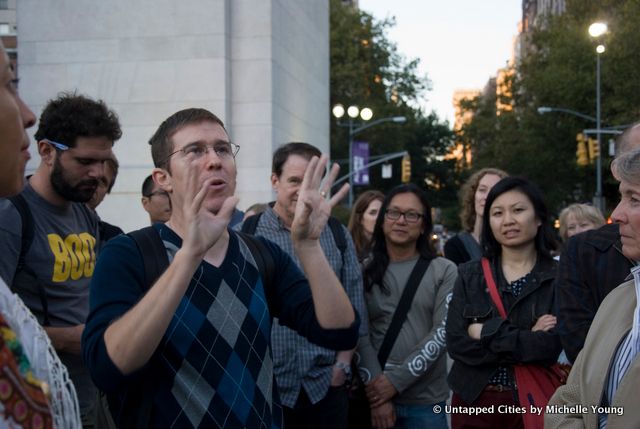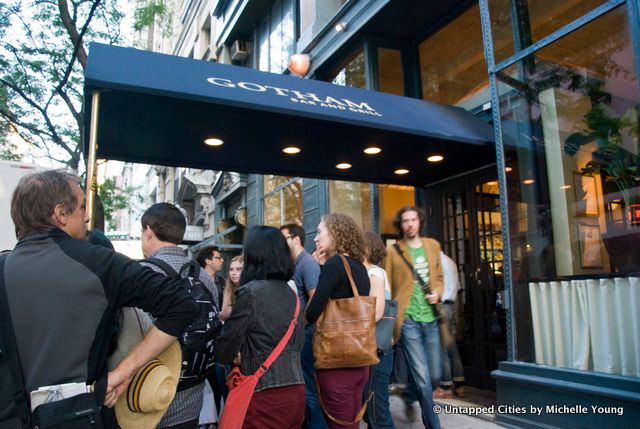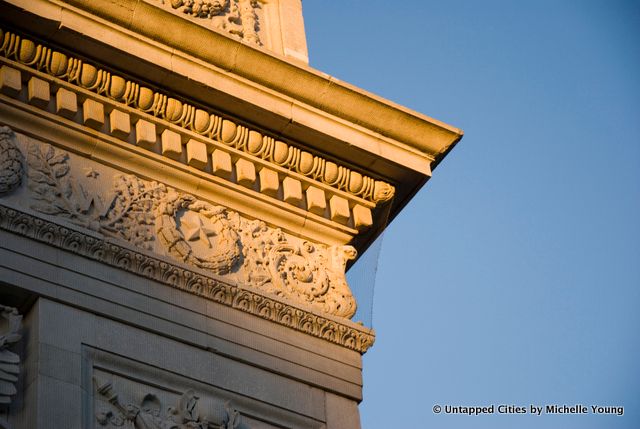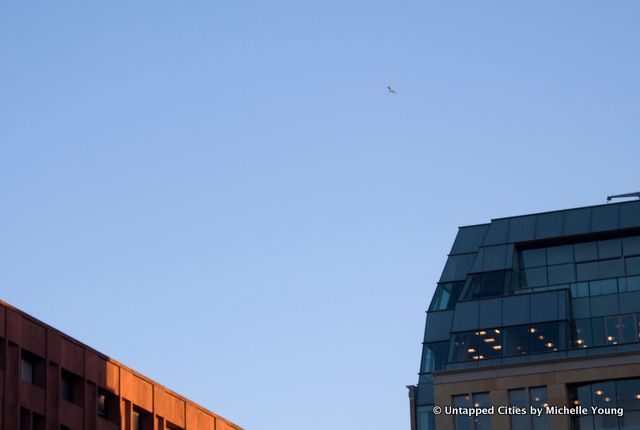A Salvaged Banksy Mural is Now on View in NYC
This unique Banksy mural goes up for auction on May 21st in NYC!

 Author Colin Jerolmack of The Global Pigeon
Author Colin Jerolmack of The Global Pigeon
While you might think a tour of pigeon-related landmarks may not score high on the popularity scale for urban adventures, over thirty showed up punctually at 6pm for the recent Columbia University Studio-X tour with Colin Jerolmack, author of The Global Pigeon. Rather fortuitously, the tour began with the squawking of a call of prey, which came out of a soundbox attached to a Union Square building. This is just one weapon in the “war on pigeons,” said Colin to the group. Other means include sticky gel, spikes, real hawk and falcons, and good old fashioned poison.

Likely the Call of Prey soundbox on a building in Union Square
But collectively, we haven’t always been so fearful of pigeons. Pigeon breeding, or the modern-day “pigeoneering” used to be much more mainstream. The first 80 pages of Darwin’s Origin of Species is devoted to pigeons, as a metaphor for genetic variation as all pigeons originated from a single source. The French aristocracy built mini houses for their pigeons, and in fact, the street pigeons we see today are descendants of escaped French pigeons (North American native passenger pigeons are extinct).
At our first stop, Gotham Bar and Grill, Colin pointed out the “squab” that was on the menu. Pigeons are still regularly in French cuisine under its more fancy name. Colin told us that the New York City restaurant D’Artagnan buys 1500-1800 squab per week from pigeon farms.

The anti-pigeon movement began when the city started lumping together alleged problems, said Colin. The cleaning of public parks of undesirable populations became tied to the eradication of pigeons, which were linked to disease. First came designated pigeon feeding areas, then feeding became criminalized, with up to $1000 fine. Pigeons were also being described as “rats with wings.” There have even been talks about hiring a “Pigeon Czar.”
Our next stop was Washington Square Park, and on the way, we talked more about “pigeoneering” styles like the tipplers (trained to fly around and around the roof of a house), tumblers, and the lesser known talents of the birds. For example, pigeons can pass the mirror test (to recognize themselves) and can recognize different styles of paintings–Cubism v. Impressionism, for example.
In Washington Square Park, Jerolmack pointed out the netting around the famous arch, which protects it from the corrosiveness of guano droppings.

Washington Square was curiously devoid of pigeons on our visit but we noticed the hawks flying around. Jerolmack pointed out their next on the NYU Library building which was once equipped with a webcam. There was a period, he mentioned, when the public got obsessed with watching whether the eggs were going to hatch. When they didn’t, there were suggestions to go up there and literally crack them open. Jerolmack pointed out the contradiction between our attraction to untouched nature in urban spaces and our tendency to intervene.

Today, hawks and falcons are making a comeback nesting in many areas of Manhattan, and initiatives like the restoration of Jamaica Bay will only support their resurgence. But, what if the rarity of hawks is part of the allure, wondered Jerolmack, “What happens when there are thousands of them?”
At Father Demos Square, another pigeon stronghold, Colin talked about the reason he got interested in pigeons: he was studying interactions in the square and a pigeon crapped on him. He also spoke about the ways in which he realized that pigeons are active participants in shaping human experiences of place and urban social interactions — from the ways in which pigeons “train” people to give food, setting up almost scripted interactions, to the ways in which feeding pigeons defines the experience of a place like St. Mark’s Square.
The tour ended with a talk at Studio-X Columbia on Varick Street, where there was a fascinating discussion about pigeon racing and pigeon wars, and what pigeon-keeping means to different communities in New York City.
Get a copy of The Global Pigeon on Amazon. Special thanks to Nicola Twilley of Studio-X NYC for additional reporting.
Subscribe to our newsletter